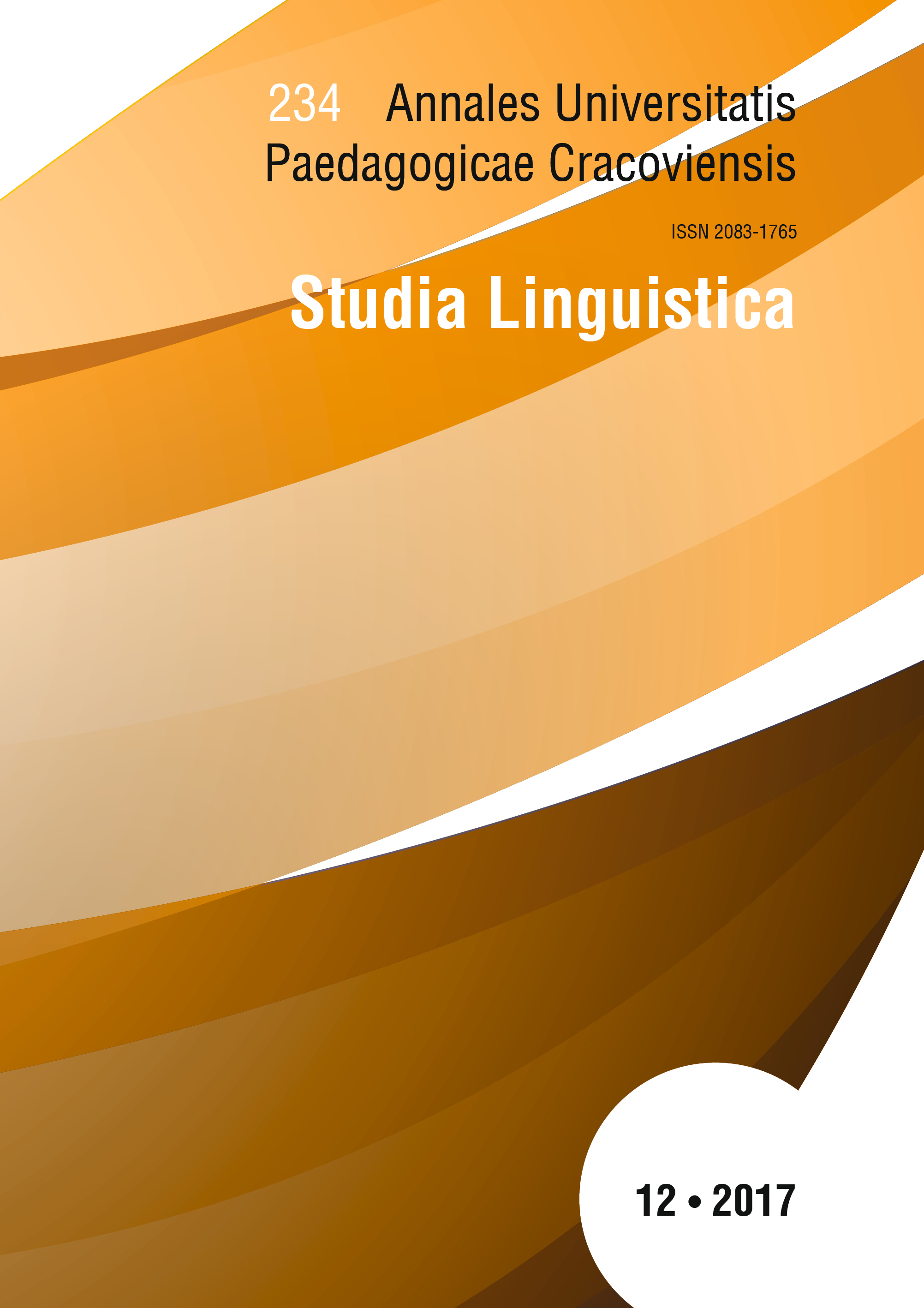From the history of the Polish syntax
Main Article Content
Abstract
The subject of the article are certain conjuctional constructions in ancient Polish language with (1) sociative preposition, (2) participle, (3) verbe - sentence, (4) hypotaxis - parataxis, (5) repeated conjunction (polysyndeton). In conclusion is presented state and perspectives of researches in historical syntax.
Downloads
Article Details
Author, submitting a text to the editorial board of the journal “Annales Universitatis Paedagogicae Cracoviensis. Studia Linguistica", certifies that the content of the article has not been published so far and that the work does not violate in any way the copyright or related rights of other person, as well as other rights of third parties, and that no one's rights to the work (or any part thereof) have been missed. After signing the contract, the property rights to the published materials are transferred to the Scientific Publisher of the University of the National Education Commission, Krakow.
“Annales Universitatis Paedagogicae Cracoviensis. Studia Linguistica” is an open access journal, and all its content is made available free of charge to users and institutions under the Creative Commons CC-BY-NC-ND 4.0 license (attribution, non-commercial use, no derivative works). Under this license, the authors agree that their work may be lawfully reused for any purpose, except for commercial purposes, without the prior consent of the author or publisher. Everyone can read, download, copy, print, distribute and process these works, provided that the author's marking and the original publication place are correct. Published texts may not be used to create derivative works (e.g. to translate and publish in another language without the consent of the publisher). This is in line with the BOAI (Budapest Open Access Initiative) definition. "Studia Linguistica" does not charge for submitting or processing articles.
References
Bauer J., 1960, Vývoj českého souvětí, Praha.
Google Scholar
Bednarczuk L., 1967, Polskie spójniki parataktyczne, Wrocław.
Google Scholar
Bednarczuk L., 1971, Indo-European parataxis, Kraków.
Google Scholar
Delbrück B., 1893–1900, Vergleichende Syntax der indogermanischen Sprachen, Strassburg.
Google Scholar
Klemensiewicz Z., 1955/1981, Składnia, [w:] Gramatyka historyczna języka polskiego, Warszawa (IV wyd. 1981), s. 391–508.
Google Scholar
Klemensiewicz Z. (red.), 1966, Zapomniane konstrukcje składni staropolskiej, Kraków.
Google Scholar
Koneczna H., 1956, O budowie zdania Imć Pana Paskowego słów kilkoro, „Poradnik Językowy”, s. 281–292.
Google Scholar
Kowalik K., 1984, Morfonologia, s. 59–95; Morfotaktyka, s. 513–546, [w:] GWJP, Morfologia, Warszawa.
Google Scholar
Kowalik K., 1997, Struktura morfonologiczna współczesnej polszczyzny, Kraków.
Google Scholar
Łoś J., 1923, Składnia, [w:] Gramatyka języka polskiego (PAU), Kraków, s. 287–408.
Google Scholar
Łoś J., 1927, Zasady składni, [w:] Krótka gramatyka historyczna języka polskiego, Lwów, s. 278–373.
Google Scholar
Pisarkowa K., 1974, O stosunkach między parataksą a hipotaksą, „Język Polski” LIV,s. 81–93.
Google Scholar
Pisarkowa K., 1984, Historia składni języka polskiego, Wrocław.
Google Scholar
Safarewicz J., 1950, Składnia, [w:] Gramatyka historyczna języka łacińskiego, t. II, Warszawa.
Google Scholar
Szantyr A., 1965, Lateinische Syntax und Stilistik, München.
Google Scholar
Taszycki W., 1924, Imiesłów czynny teraźniejszy w języku polskim, Kraków.
Google Scholar
Twadzikowa J., 1981, Staropolskie skorelowane wskaźniki zespolenia, [w:] Studia z polskiej składni historycznej, t. II, s. 29–35.
Google Scholar
Vaillant A., 1977, Grammaire comparée des langues slaves, t. V, La syntaxe, Paris.
Google Scholar
